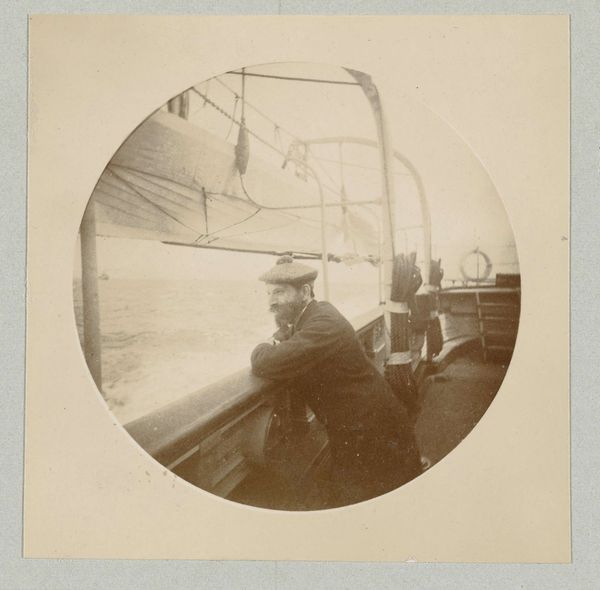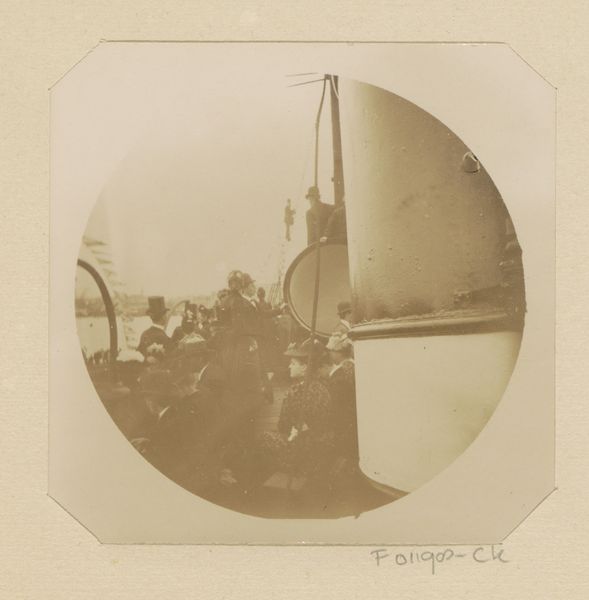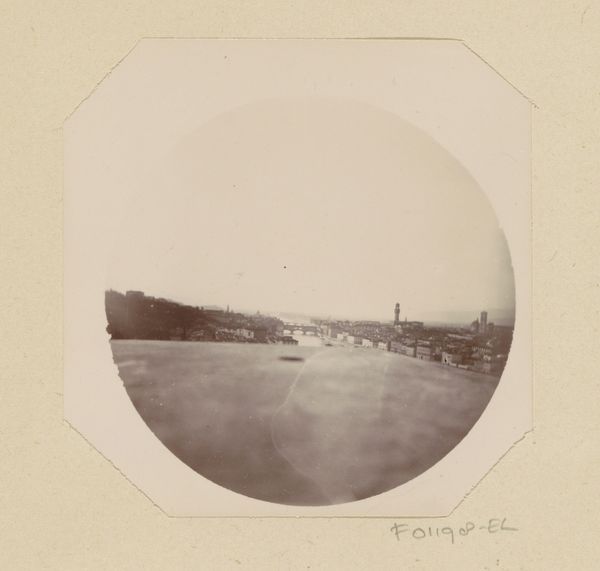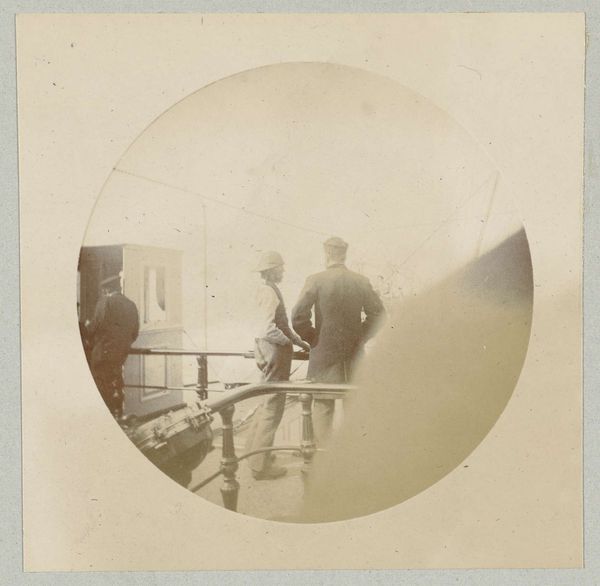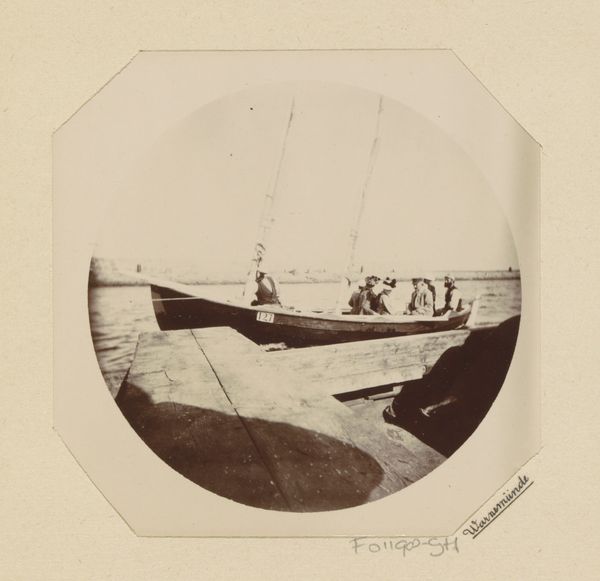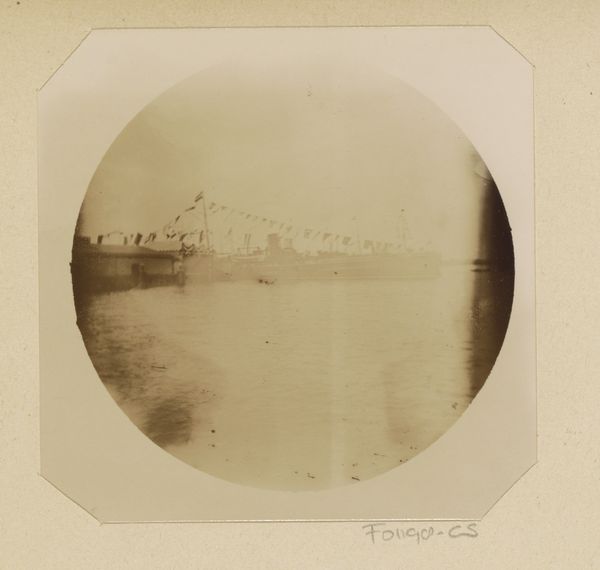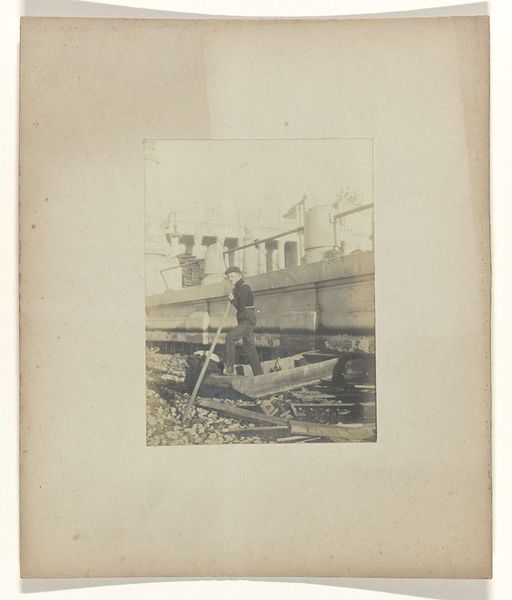
Dimensions: height 72 mm, width 72 mm, height 314 mm, width 450 mm
Copyright: Rijks Museum: Open Domain
Editor: Here we have Paul Güssfeldt’s "Kapitein op het bovendek van de Hohenzollern," a gelatin silver print from 1889. It feels almost like a stage, set within this perfectly round frame. What jumps out at you about the composition? Curator: The most striking element is surely the severe geometry, especially given its Romantic context. Notice how the rigid lines of the deck machinery contrast against the softer focus and tones of the distant mountains, drawing the eye into a fascinating dialogue between structure and atmosphere. Editor: I see what you mean. It's a play between hard and soft. So, is the captain almost secondary to the ship's architecture itself? Curator: Indeed. Observe the captain’s posture and positioning. He seems meticulously placed in relation to the diagonal thrust of the ship's components, yet detached. This carefully orchestrated tension reinforces a reading where form overrides narrative. Ask yourself how different this work would be with the figure removed? Editor: The round framing adds to the artifice. The world doesn't look like that! It makes me consider photography's claim to objectivity. Curator: Precisely. This artistic choice invites questions concerning the nature of photographic representation and the degree to which the artist manipulates the medium. The image insists not upon transparent recording, but artistic construction. Editor: So, beyond just documentation, it seems that Güssfeldt sought to emphasize shape and form using the interplay of hard lines against soft landscapes. Thank you for untangling that, it's more complicated than it looks. Curator: You are most welcome. The deceptively simple exterior gives way to deeper considerations about how art interacts with its tools.
Comments
No comments
Be the first to comment and join the conversation on the ultimate creative platform.





